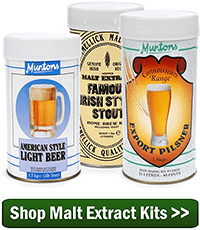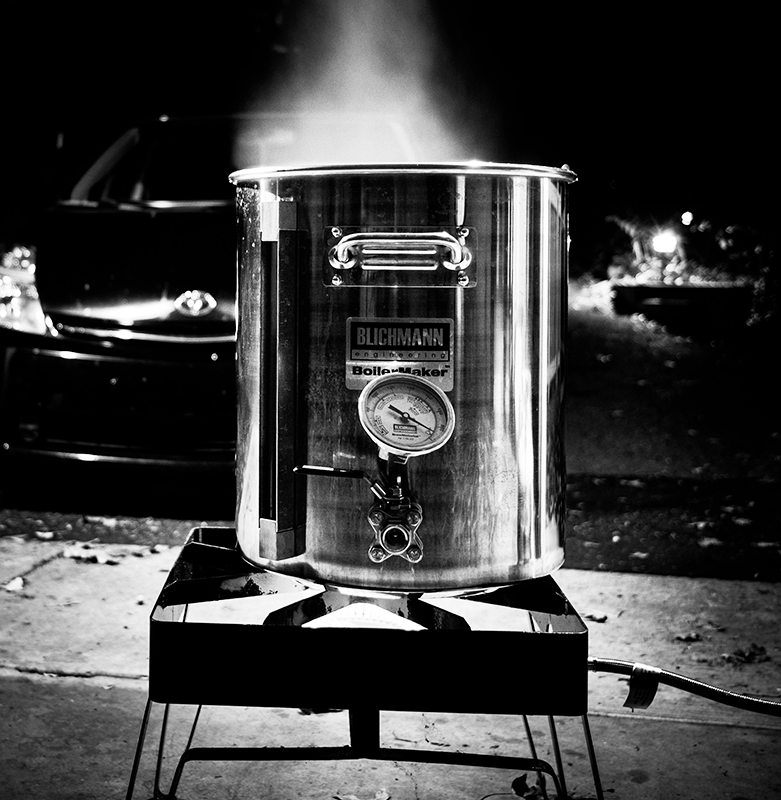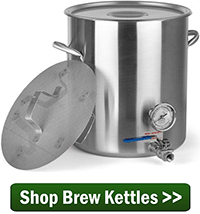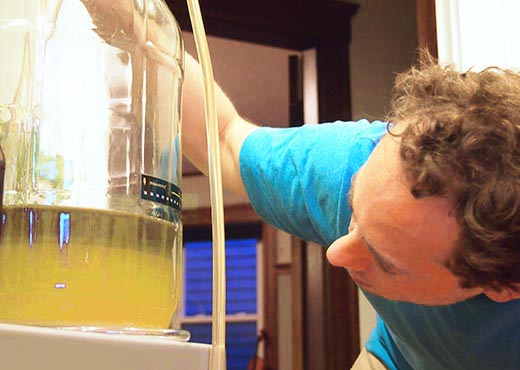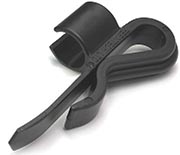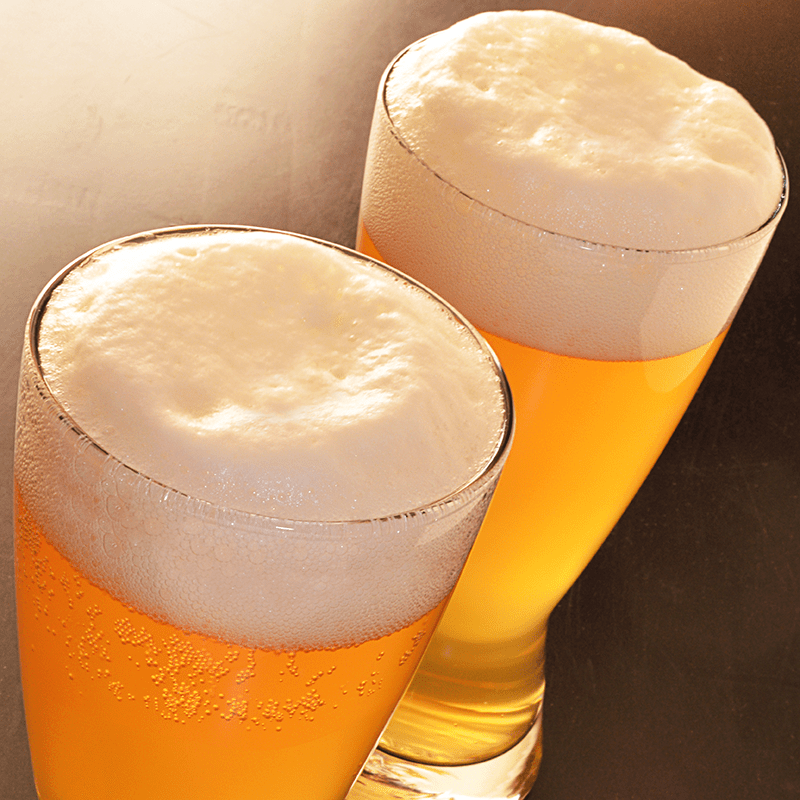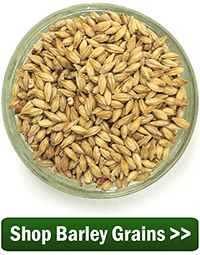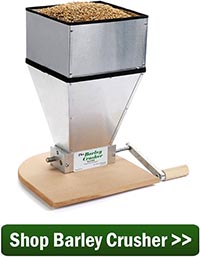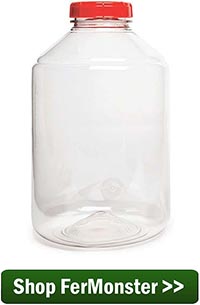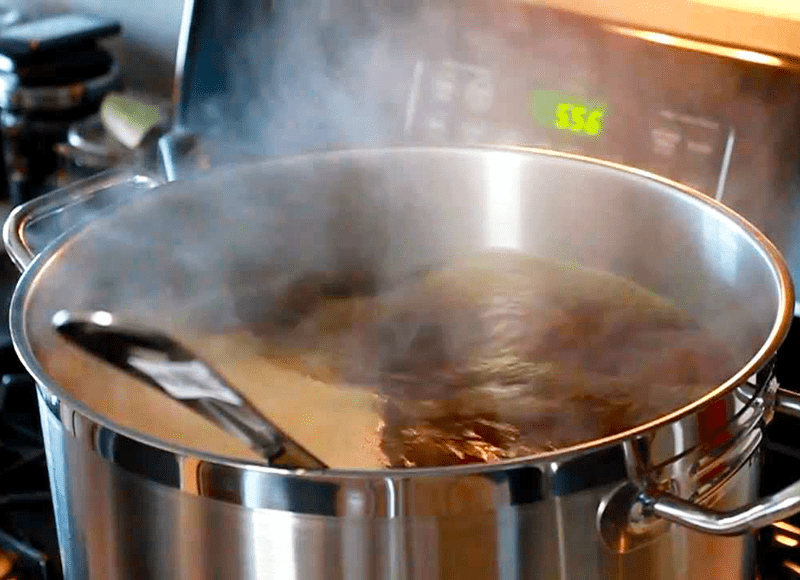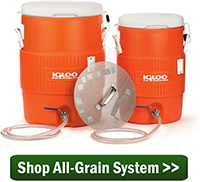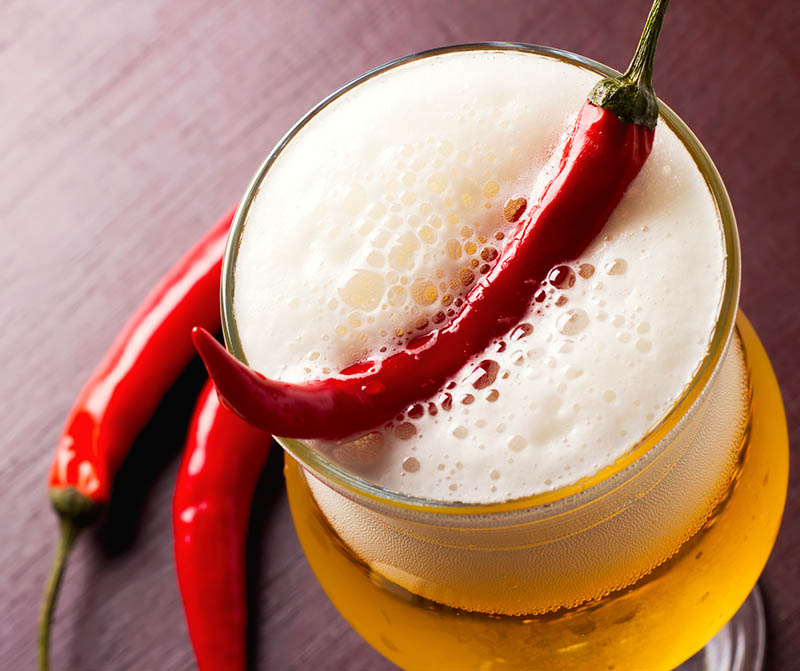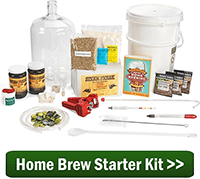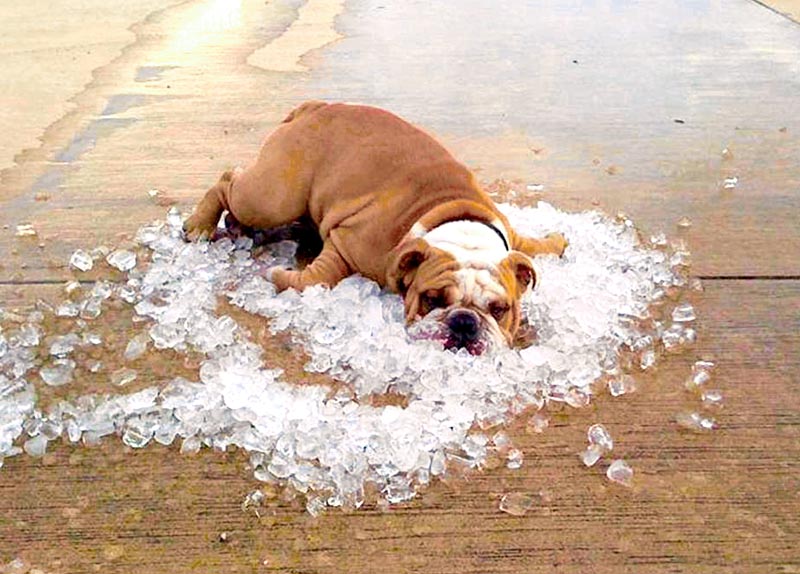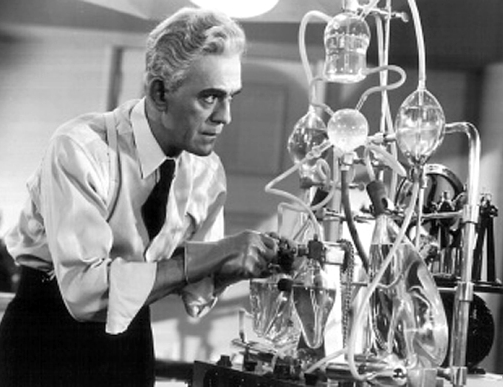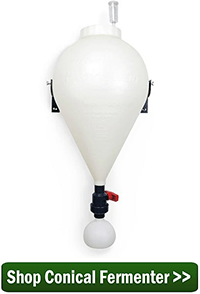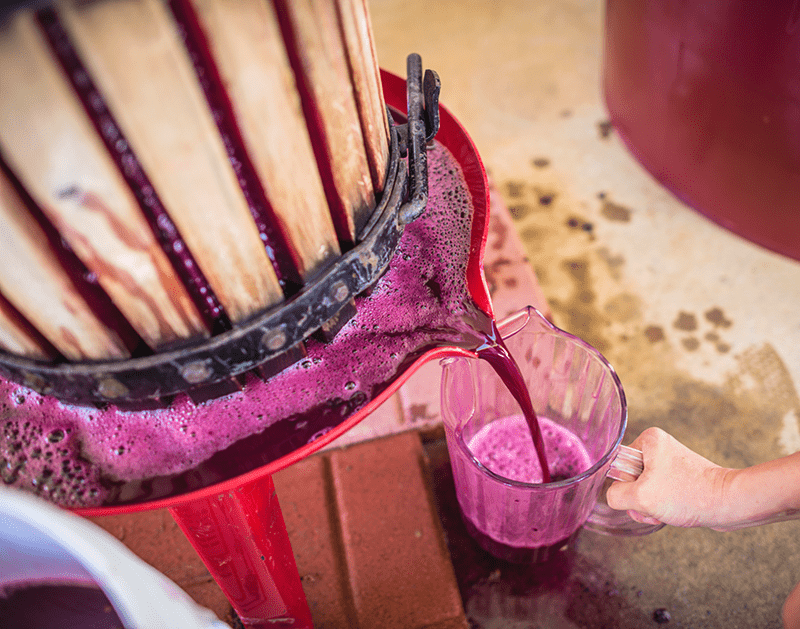 Here are five tips for using a wine press. This are basic tips that will help you get the most out of your press. Learning how to make wine using a wine press is very straight-forward. Even so, this tips should help you avoid the pitfalls we see most often.
Here are five tips for using a wine press. This are basic tips that will help you get the most out of your press. Learning how to make wine using a wine press is very straight-forward. Even so, this tips should help you avoid the pitfalls we see most often.
- You Can Press More Than Just Grapes With A Wine Press:
While wine presses are sold with the intent of being used for making grape wine, they work perfectly fine for pressing other fruits. Everything from tiny elderberries on up to apples can be pressed with a wine press.
- Before Using A Wine Press, All Fruits Must Be Crushed:
While you can press a variety of fruits with a wine press, it is important that the fruit be crushed beforehand. This is true whether you are pressing grapes, blueberries or pears. Depending on the amount of fruit you are dealing with: you can crush the fruit by hand; you can use a blunt object such as the butt end of a 2X4; or you can get an actual grape crusher to do the work for you.
- Before Using A Wine Press, The Stems Should Be Removed:
This primarily applies to pressing grapes. Some stems are alright, but excessive stems left in with the pulp can cause your resulting wine to have excessive tannin. This can give it an astringent flavor. The astringency can age-out over time, but the result of that would be a dark, dusty sediment forming in the bottom of your wine bottles. To remove the stems you can pick the grapes from them, but if you have a larger amount you may want to invest in a grape de-stemmer that does the process for you. A grape de-stemmer typically will crush the grapes as well, so you can handle both process with one piece of wine making equipment.
- Whites Are Pressed Before Fermentation, Reds After:
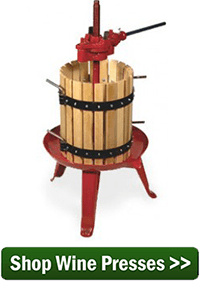 This one often throws a lot of beginning winemakers off. Many assume that the grapes are always pressed before fermenting. In the case of making a white wine, they would be right. The grapes are de-stemmed, crushed, pressed and then fermented. However, when making a red wine, you want to de-stem, crush, ferment and then press. Having the pulp in during the fermentation is what gives a red wine its ‘red’. It is also what gives these wines more body than most whites. If the pulp were not in a fermentation you would end up with a blush wine.
This one often throws a lot of beginning winemakers off. Many assume that the grapes are always pressed before fermenting. In the case of making a white wine, they would be right. The grapes are de-stemmed, crushed, pressed and then fermented. However, when making a red wine, you want to de-stem, crush, ferment and then press. Having the pulp in during the fermentation is what gives a red wine its ‘red’. It is also what gives these wines more body than most whites. If the pulp were not in a fermentation you would end up with a blush wine.
- Choose A Wine Press That’s The Right Size For You:
Wine presses come in all sizes. In general, they all press with the same amount of pressure and extract the juice with the same amount of efficiency. It is simply a matter of how much wine press do you need. Too much press and you won’t be able to fill the pressing basket all the time. Not enough press and you’ll be using a wine press all weekend. All the wine presses we list on our website also have listed how many pounds of fruit they will hold and the approximate number of gallons of juice you can expect with each pressing.
I am sure there are others, but these are the main tips for using a wine press. If you have a tip on how to make wine using a wine press, please leave it in the comments below. We’d love to hear your ideas.
—–
Ed Kraus is a 3rd generation home brewer/winemaker and has been an owner of E. C. Kraus since 1999. He has been helping individuals make better wine and beer for over 25 years.

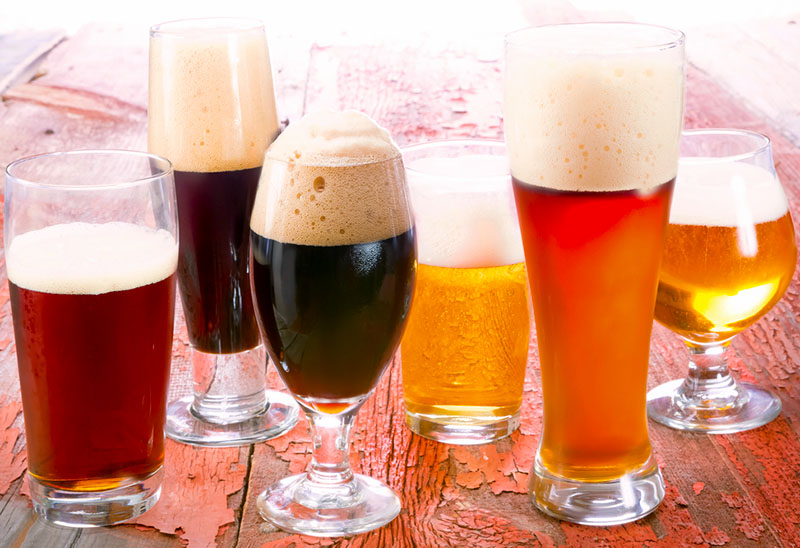
 Goblet – Ideal for Belgian ales and Berliner weiss, the goblet features a wide mouth for easy access to the beer’s complex flavors and a structure that supports head retention.
Goblet – Ideal for Belgian ales and Berliner weiss, the goblet features a wide mouth for easy access to the beer’s complex flavors and a structure that supports head retention. Flute – A flute is a narrow beer glass that tapers towards the bottom. The shape gives the viewer a good look at carbonation and helps release the pleasing aromas of gueze, lambic, swarzbier, and
Flute – A flute is a narrow beer glass that tapers towards the bottom. The shape gives the viewer a good look at carbonation and helps release the pleasing aromas of gueze, lambic, swarzbier, and  Pilsner – The pilsner glass is similar to the flute, but it has a wider mouth. The change in shape showcases color, supports head, and encourages aromatics of – not surprisingly – pilsners, but also blonde ales, bocks, and witbier.
Pilsner – The pilsner glass is similar to the flute, but it has a wider mouth. The change in shape showcases color, supports head, and encourages aromatics of – not surprisingly – pilsners, but also blonde ales, bocks, and witbier.
 Pint Glass – Of all the beer glass types, this is the all-around go-to glass. It is versatile as it is common and is ideal for many of your favorite beers, including amber ale, altbier, English bitter, brown ale, IPA, porter, and
Pint Glass – Of all the beer glass types, this is the all-around go-to glass. It is versatile as it is common and is ideal for many of your favorite beers, including amber ale, altbier, English bitter, brown ale, IPA, porter, and  Snifter – The snifter, just like what you would use for brandy or cognac, is a smaller version of a goblet with a lip that turns inward, capturing desirable aromatics. Snifters are smaller than most other glasses, making them a good fit when drinking higher gravity beers. Use a snifter when enjoying barley wine, Belgian dark strong ale,
Snifter – The snifter, just like what you would use for brandy or cognac, is a smaller version of a goblet with a lip that turns inward, capturing desirable aromatics. Snifters are smaller than most other glasses, making them a good fit when drinking higher gravity beers. Use a snifter when enjoying barley wine, Belgian dark strong ale,  Stange – A stange is a relatively narrow beer glass type with no taper. It concentrates aromas into a narrow channel and gives the drinker a good look at the beer. Stange glasses are appropriate for a number of styles, including altbier, bock, gose, lambic, and rye beer.
Stange – A stange is a relatively narrow beer glass type with no taper. It concentrates aromas into a narrow channel and gives the drinker a good look at the beer. Stange glasses are appropriate for a number of styles, including altbier, bock, gose, lambic, and rye beer.
 Stein – In German, “stein” means stone. For years prior to the widespread use of glass, these large mugs were made of stone. Go to Germany today and ask for a “Mass stein” – they’ll give you a full liter of suds. Steins work great for Oktoberfestbier.
Stein – In German, “stein” means stone. For years prior to the widespread use of glass, these large mugs were made of stone. Go to Germany today and ask for a “Mass stein” – they’ll give you a full liter of suds. Steins work great for Oktoberfestbier. Tulip – The tulip is on of the great all-around beer glass types for
Tulip – The tulip is on of the great all-around beer glass types for  Weizen Glass – The weizen glass is designed for wheat beers. Its size allows for a large serving of the refreshing beer and a big, wheaty head while also helping to enhance aromas. Use a Weizen glass for all types of wheat beer.
Weizen Glass – The weizen glass is designed for wheat beers. Its size allows for a large serving of the refreshing beer and a big, wheaty head while also helping to enhance aromas. Use a Weizen glass for all types of wheat beer.